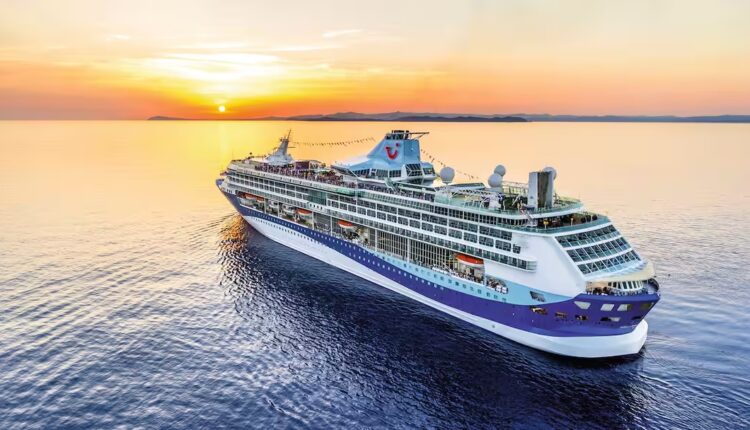Introduction: Beyond Transport – A Floating World
A cruise ship is far more than a vessel gliding through open seas; it is a curated universe afloat—a seamless blend of engineering marvel, luxury resort, and cultural hub. The very concept has evolved from practical transoceanic liners into destinations in themselves, offering travelers a unique promise: to explore diverse corners of the globe without ever sacrificing comfort or continuity. Today, as passengers step aboard, they are greeted not just by polished decks and sweeping views but by an entire experience meticulously designed to enchant, entertain, and inspire.
The Evolution of Cruising: From Steamships to Floating Cities
Cruise travel has roots that stretch back to the 19th century, when steamships carried the wealthy elite across the Atlantic. These early voyages, often formal and structured, laid the foundation for the modern cruise industry. Over the decades, the purpose of cruising gradually shifted from mere transportation to leisure.
-
Post-war transformation: In the mid-20th century, rising air travel replaced ocean liners as the primary means of crossing oceans, prompting cruise companies to redefine themselves around entertainment and tourism.
-
The rise of mega-ships: From the 1990s onward, cruise lines introduced ever-larger vessels, capable of hosting thousands, complete with multi-story atriums, shopping boulevards, and water parks.
-
Tailored experiences: Today’s cruise ships cater to specific interests—from culinary voyages featuring Michelin-starred chefs to adventure cruises through the Arctic or Galápagos.
This evolution reflects a broader trend: the shift from necessity to lifestyle—a journey chosen not because one must cross the sea, but because there is joy in the voyage itself.
Anatomy of a Cruise Ship: A City at Sea
Modern cruise ships resemble small cities, equipped to meet nearly every desire or whim of their guests.
-
Accommodation: Cabins range from cozy interior staterooms to lavish multi-room suites with private balconies and whirlpools.
-
Dining: Passengers can dine at expansive buffets, intimate specialty restaurants, or alfresco terraces overlooking the waves.
-
Entertainment: Theaters stage Broadway-style shows, cinemas screen first-run films, and lounges host live music that drifts through the night air.
-
Wellness and recreation: Spas, fitness centers, pools, and running tracks provide balance for indulgent feasts and late-night cocktails.
-
Unique offerings: Ice-skating rinks, surfing simulators, climbing walls, and even carousels reflect a relentless push to redefine what’s possible at sea.
These features transform the cruise ship from mere transport into a floating destination—where the journey itself becomes as memorable as the ports visited.
The Magic of the Open Sea: Why We Cruise
For many travelers, the romance of a cruise lies not just in amenities but in the intangible allure of life at sea.
-
Ever-changing views: Waking to a new horizon each morning lends an invigorating sense of discovery.
-
Rhythm and relaxation: The gentle sway of the ship, combined with sea breezes and panoramic vistas, invites a slower, more reflective pace of life.
-
Ease and continuity: Unpack once and let the ship carry you from city to island to hidden cove, eliminating the logistical strain of overland travel.
-
Social connections: Cruises bring together guests from around the world, fostering friendships over shared meals and sunset decks.
This blend of convenience, community, and natural wonder is what makes cruising a uniquely enduring form of travel.
Sustainability at Sea: Navigating Toward Responsibility
The cruise industry has faced rightful scrutiny over environmental impact—from emissions to waste disposal. In response, many cruise lines have begun meaningful changes.
-
Cleaner fuel: Newer ships employ liquefied natural gas (LNG) and hybrid technologies to reduce carbon footprints.
-
Advanced wastewater treatment: Modern systems help protect marine ecosystems by treating wastewater to near-drinking standards.
-
Shore power: Some ports allow ships to plug into local grids, reducing engine use while docked.
-
Waste reduction: Onboard recycling programs, sustainable sourcing, and elimination of single-use plastics are becoming the norm.
While progress is ongoing, these initiatives reflect a growing awareness that the privilege of sailing the seas comes with a duty to protect them.
Choosing Your Cruise: Tailoring the Perfect Voyage
Today’s cruise offerings are as diverse as travelers themselves. When planning, consider these aspects:
-
Destination focus: Caribbean islands, Mediterranean culture, Nordic fjords, or remote Antarctic landscapes each offer distinct charms.
-
Ship size and atmosphere: Smaller ships offer intimacy and access to hidden ports, while larger vessels provide a dazzling array of facilities.
-
Cruise theme: Culinary, wellness, expedition, or family-focused cruises each craft experiences around specific interests.
-
Duration: Short weekend getaways offer a taste of cruising, while world cruises lasting several months promise an odyssey of discovery.
A well-chosen cruise becomes not just a holiday, but a seamless narrative where each sunrise promises something new.
Conclusion: More Than a Voyage
To step onto a cruise ship is to step into possibility: a world where days blend leisure with adventure, where the horizon becomes both destination and companion. Beyond the spectacle of grand staircases and glittering chandeliers lies something elemental—the timeless human desire to set forth, explore, and belong.
Cruising, at its heart, is a testament to our love of movement and our need for connection: to the sea, to new cultures, and to fellow travelers whose paths briefly join our own. In that shared journey, we find not only ports and panoramas—but moments that linger long after the final gangway is crossed.


Comments are closed.